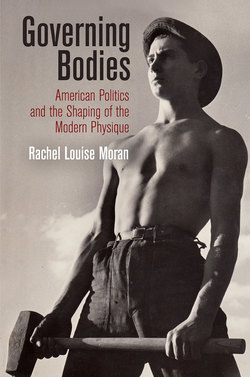Governing Bodies

Реклама. ООО «ЛитРес», ИНН: 7719571260.
Оглавление
Rachel Louise Moran. Governing Bodies
Отрывок из книги
Governing Bodies
IN MODERN AMERICA
.....
When the Children’s Bureau conflated height and weight ratios with health, it solved some of its child health problems and created others. By the early 1920s, for example, statistician Louis Dublin wrote that immigrant children’s bodies did not conform to the same standards as white, native-born children. When public health workers measured Italian immigrant children to assess their health, he explained, they marked many of the children as healthy when they were in fact malnourished. Along the same lines, other researchers concluded that “the fact that an individual child weighs less or more than the average is not conclusive proof that he is undernourished or overnourished.”51 In a 1924 article bluntly titled “The Use and Abuse of Age-Height-Weight Tables as Indexes of Health and Nutrition,” table cocreator Bird T. Baldwin argued that height-weight tables were “frequently inaccurate in themselves” and egregiously inaccurate in the hands of novice measurers.52 He still supported the use of his own Baldwin-Wood tables, but decried the use of other tables and what he called the “inaccurate measurements” taken by laywomen, nurses, and nutritionists alike. While Baldwin’s condemnation of female-led public health work fits into the consolidation of medical authority happening at this moment, more surprising critics of the tables also spoke out. Suspicions even emerged from the Children’s Bureau itself, an agency whose public health identity was tightly linked with its dissemination of the charts. The bureau promoted height-weight tables even though few of its employees believed that the tables identified all the health issues they were meant to identify.53 The charts were political tools that produced the idea of the healthy modern child as much as they assessed it.
Bureau promotions not only popularized weighing, but also constructed the practice as an unusually intimate advisory state activity. Weighing in and of itself did not require medical expertise, but it did take equipment. Anyone could weigh themselves or someone else with little education. In the 1910s and early 1920s, public health and medical specialists owned the proper scales, which might be borrowed for child health contests. Women’s clubs interested in weighing and measuring children often teamed up with public health officials as a way of accessing scales and charts. By the late 1920s, however, it was much easier to find both of these technologies. Retailers began marketing home scales as early as 1913, but these remained too pricy for most.54 Scales constituted a more reasonable purchase for a school, though, and school nurses weighed children a few times each year.55 Most mothers could also be taught the basic graphic literacy required to read height-weight tables and figure out if the weight they calculated was too high, too low, or about right. With this number in hand, a mother or teacher could pick up a nutrition book to fix the problem herself. Or she might go to a clinic or physician, especially if it was a young child who was not measuring up. The bureau inserted these charts into nearly every infant and child care pamphlet it published. Tables were not meant to be flawless; they were meant to draw women in.
.....